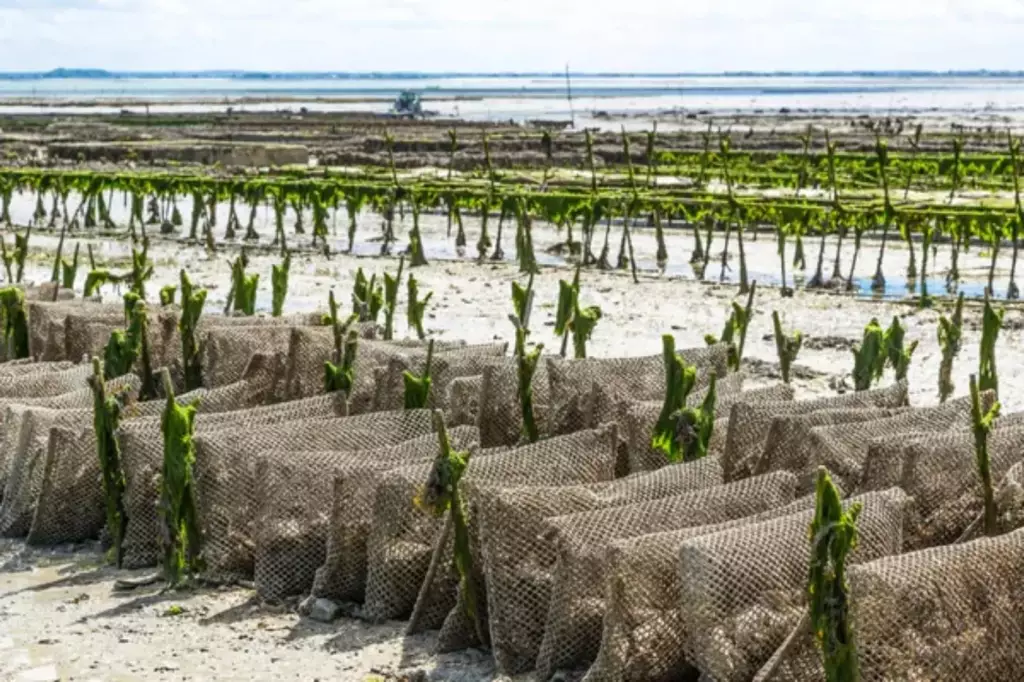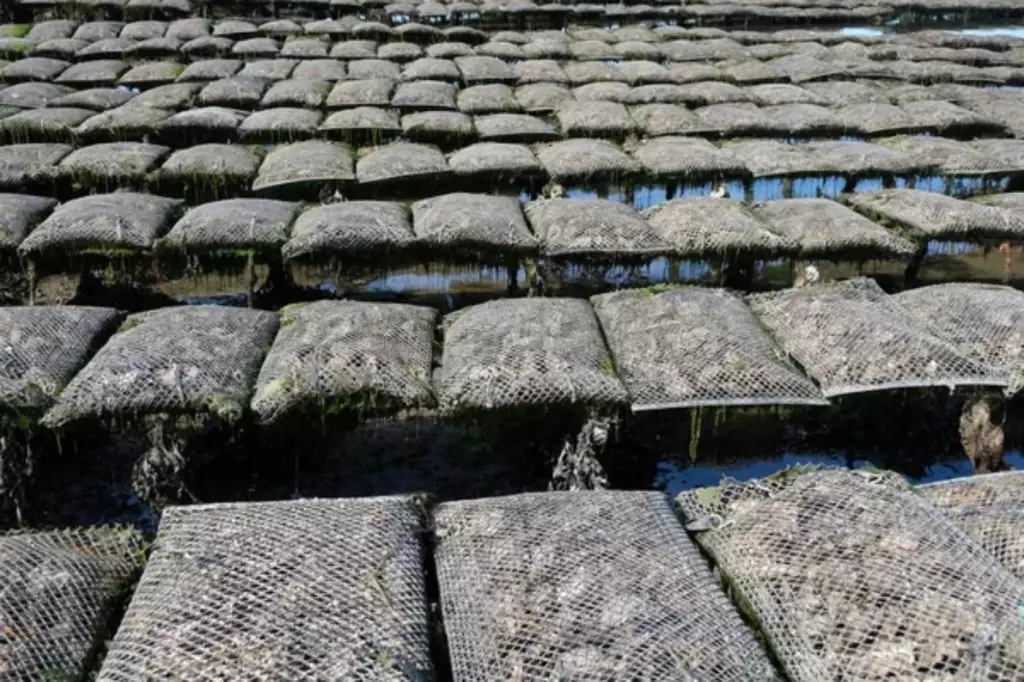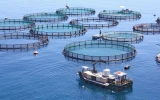How Profitable Is Oyster Farming ? (Full Breakdown)
At its core, oyster farming involves cultivating oysters in a marine or estuarine environment, often within protected areas known as oyster farms. It has steadily gained traction as a sustainable and profitable venture within the United States and the wider global market. In this article, we'll give you a full breakdown of how profitable oyster farming can be.
Oyster farmers can potentially make a significant income, with an estimated average annual income ranging from $50,000 to $150,000. Leasing land for oyster farming could cost between $250 to $1,000 per acre annually, with land purchase prices ranging from $3,000 to $10,000 per acre.
As you delve into the oyster farming industry, you will find that profitability hinges on various factors such as the efficiency of the farming techniques employed, the prevailing environmental conditions, and selecting the right oyster species. Let's take a closer look at how these factors affect the profit potential of oyster farms.
Summary
- Starting an oyster farm requires a significant initial investment in equipment, with costs potentially totaling over $11,000 for basic items such as oyster cages, a workboat, and oyster feed.
- Ongoing operational expenses for an oyster farm can be substantial, particularly due to labor costs, which can range from $15,000 to $100,000 annually.
- The Eastern oyster (Crassostrea virginica) and the Pacific oyster (Crassostrea gigas)** are two popular choices in oyster farming as they are highly sought after in the market, and have faster growth rates compared to other species.

On this page:
Profitability of Oyster Farming
In evaluating the profitability of oyster farming, you need to consider market demand, pricing strategies, and overall revenues. These factors directly influence your return on investment (ROI).
Estimated profit from oysters
The revenue you can generate from oyster farming depends on several variables including the market demand and the pricing of your oysters.
Leasing land for oyster farming could cost between $250 to $1,000 per acre annually, with land purchase prices ranging from $3,000 to $10,000 per acre. Considering the investment and operational costs, your earnings can also fluctuate.

Oyster farmers can potentially make a significant income, with estimates suggesting an average annual income ranging from $50,000 to $150,000.
Here is a sample calculation for a clearer understanding:
| Profit Calculation Factors | Estimated Amount |
|---|---|
| Cost to lease 1 acre | $500 |
| Cost to purchase equipment and seed | $2,000 |
| Estimated yearly yield per acre | 3,000 pounds |
| Average market price per pound | $10 |
| Estimated revenue | 3,000 pounds x $10 = $30,000 |
Estimated profit (excluding other operating expenses): $30,000 - $500 (lease) - $2,000 (equipment/seed) = $27,500
Remember, this is a simplified example and actual profits would need to factor in other operational costs and market variations.
Calculating profit margin from oyster farming
Suppose an oyster farm sells 100,000 oysters in a year at $0.50 per oyster, generating $50,000 in revenue. The farm's total operating costs for the year come to $30,000, including costs for labor, equipment, supplies, etc.
To calculate profit margin:
- Revenue = $50,000
- Total costs = $30,000
- Net profit = Revenue - Total costs = $50,000 - $30,000 = $20,000
- Profit margin = Net profit / Revenue x 100 = $20,000 / $50,000 x 100 = 40%
Costs Associated With Oyster Farming
In this section, we'll dive into the specific costs associated with oyster farming, giving you a detailed look at where your investment will go and what expenses to anticipate.
Costs for oyster farming equipment
Your oyster farming venture requires a variety of equipment to get started. The table below shows a list of the main equipment required to start an oyster farm and their estimated price ranges:
| Farm Equipment | Price Range |
|---|---|
| Seed or spat | $0.20 - $1.00 |
| Oyster bags/cages | $5.00 - $25.00 |
| Floats and buoys | $3.00 - $50.00 |
| Anchors and lines | $20.00 - $200.00 |
| Workboat | $3,000 - $30,000 |
| Miscellaneous tools | $100 - $500 |
-
Seed or spat: These juvenile oysters are the foundation of your farm. Prices vary depending on the species and quantity, and you can expect to pay anywhere from 20 cents to one dollar per spat.
-
Oyster bags or cages: These are necessary for protecting and containing the oysters in the water. The cost can range from $5 to $25 each, largely depending on material and size.
-
Floats and buoys: These keep your oyster containers afloat and can cost between $3 to $50 each, with a wide variety due to material and size requirements.

-
Anchors and lines: These are required to secure equipment in place. You'll find anchors and lines collectively cost between $20 to $200, subject to the scale of your operation and the water's conditions.
-
Workboat: A small boat allows you to access and manage your oyster farm. Depending on the type and condition, a suitable vessel can range from $3,000 to $30,000.
-
Miscellaneous tools: Equipment like gloves, knives for handling oysters, and maintenance tools could sum up to $100 to $500 initially.
Below is a simple calculation to illustrate the potential initial investment:
- 10 oyster cages at $100 each: $1,000
- 1 used boat: $10,000
- Oyster feed for initial stock: $100
- Total upfront cost: $11,100
Remember, maintaining your equipment is crucial for the growth and health of your oysters, and it will ultimately influence your farm’s profitability. Read this article for some useful tips when buying farm equipment.
Operational expenses for oyster farming
Aside from the initial setup costs, you should also account for labor and operational costs, including fuel for boats, maintenance of equipment, and any wages you may pay to workers assisting with the farm.
| Operational Expense | Estimated Annual Price Range |
|---|---|
| Labor | $15,000 - $100,000 |
| Fuel | $500 - $5,000 |
| Equipment maintenance | $200 - $2,000 |
-
Labor: This includes the wages or salaries paid to workers who assist in various tasks on the farm, such as planting and harvesting oysters, maintaining and cleaning equipment, and managing day-to-day operations. Labor is often the largest operational cost for an oyster farm, as it requires significant manual work.
-
Fuel: Fuel costs are associated with operating boats and possibly other machinery. Boats are used for transporting workers and equipment to the farming sites, monitoring the growth of the oysters, and harvesting. The cost of fuel will fluctuate based on current fuel prices and the amount of boat usage.

- Equipment maintenance: This includes the costs for repairing and maintaining oyster farming equipment such as bags, cages, floats, buoys, anchors, and lines. Regular maintenance is necessary to ensure the equipment is functioning properly and to prevent loss or damage to the oysters.
Factors Affecting Oyster Farm Profits
Selecting the right oyster species promotes faster growth and higher prices
Some species grow faster, and others have a higher market demand. For instance, the Eastern oyster (Crassostrea virginica) and the Pacific oyster (Crassostrea gigas) are two popular choices.
Ideal water conditions encourage better growth of oysters
The salinity and water temperature of your farm directly impacts oyster growth. Optimal conditions vary by species, but they generally thrive in salinities of 14 to 28 parts per thousand.
A good geographic location makes easier farming
Your farm's location affects many factors, including access to clean water and exposure to natural oyster beds, which are crucial for seed spat collection. Sites like Cape Cod and Chesapeake Bay are known for their suitability for oyster farming.
Less predation/disease equates to more oysters to sell
Potential losses due to predators like crabs and sea stars or diseases can vary. Regular monitoring and management of these threats are necessary to protect your yield.
Favorable market trends mean higher prices for oysters
Be aware of market trends and customer preferences as they fluctuate. The price point can change based on factors such as novelty or perceived quality, affecting profitability.
Lower transport costs and higher yield brings more profit
Transportation costs can reduce profits, particularly if the farm is located far from the market. A higher yield can offset these costs, but it is dependent on factors such as species selection, water conditions, location, and management practices against predation and disease.
Tips to Lower Costs and Gain More Profits in Oyster Farming
Selecting a cost-effective feed
Choosing the right feed for your oysters can influence both growth rates and your bottom line. Invest in high-quality feed that promotes efficient growth, but remain vigilant about prices to avoid overspending.
Using durable cages
Invest in durable cages that require minimal maintenance to reduce replacement costs over time. The initial investment may be higher, but the long-term savings are substantial.
Streamlining labor
Efficient labor management ensures tasks like monitoring and harvesting are done effectively. You might want to consider cross-training employees to handle multiple tasks to optimize productivity and reduce staffing costs.
| Task | Estimated Hourly Cost ($) | Hours per Week | Total Weekly Cost ($) |
|---|---|---|---|
| Monitoring | 15 | 10 | 150 |
| Harvesting | 20 | 15 | 300 |
Enhancing production efficiency
To maximize production, regularly assess and update your farming methods. Sustainable practices not only lower environmental impact but also can reduce costs related to inputs and energy.
Implementing effective monitoring
Develop a solid monitoring system to catch potential issues early, preventing losses. This includes regular water quality tests and oyster health assessments.

Refining management practices
Adopting best management practices can streamline operations and cut costs. Staying informed about the latest industry advancements gives you a competitive edge.
Encouraging optimal growth rates
Your oysters' growth rate depends on water temperature and nutrition. You might want to minimize wasted feed and promote faster growth by maintaining optimal rearing conditions.
When farming oysters, perhaps consider the scale of your operation and align it with market demand to ensure profitability. Higher production isn't always better if it leads to excess supply and lower prices.
Sustainable practices aren't just good for the environment; they often align with economic sustainability as well, as they can lead to reductions in long-term operational costs.
Oyster Farming for Pearls
When you venture into oyster farming for pearls, you're looking at cultivating oysters specifically for the pearls they produce.
Pearls are formed when an irritant, often a parasite or piece of shell, becomes trapped in an oyster's soft tissue, and the oyster secretes layers of nacre around it as a defense mechanism. This process can create highly valuable pearls.
Initial investment when farming oysters for pearls
When you decide to farm oysters for pearls, the cost-efficiency of your operations directly affects your margins. Your initial costs will involve purchasing spat (juvenile oysters), setting up the farming infrastructure, and investing in labor.
| Cost Factor | Estimated Cost Range | Notes |
|---|---|---|
| Spat purchase | $10 - $20 per thousand | Bulk buying may lower costs |
| Infrastructure set-up | $1,000 - $5,000 | Depends on the size and scale of your farm |
| Labor | $15 - $30 per hour | Invest in training to improve efficiency, reducing long-term costs |
To lessen these costs, look for reliable suppliers offering competitive rates and seek cost-effective farming methods.
Cultivation methods for successful oyster farming
When comparing trays and bags for oyster cultivation, each method has its distinct features:
Trays provide good protection against predators and environmental stress, and they are easy to handle because of their structured design.
However, trays are typically less versatile and often designed for a specific purpose, such as single oyster production, which may require more infrastructure.
On the other hand, bags offer a bit less protection as they can be more exposed, but they compensate with high versatility. They can be used in various cultivation methods, whether on racks, floated, or sunk directly on the bottom.
Regarding initial costs, trays can be more expensive; for example, a rack system might cost around $120 with a capacity of 8 bags. In contrast, bags are generally considered a less expensive option due to their simplicity and the materials used.
Maturity and harvesting of pearls
It takes between 2 to 6 years for oysters to reach full maturity and produce quality pearls. After this period, the oysters are harvested, and the pearls are extracted.
Remember, patience is key in pearl oyster farming, as it can take several years for oysters to produce pearls. During this time, maintaining the health of your oysters and the quality of your farming environment is paramount to your success.



